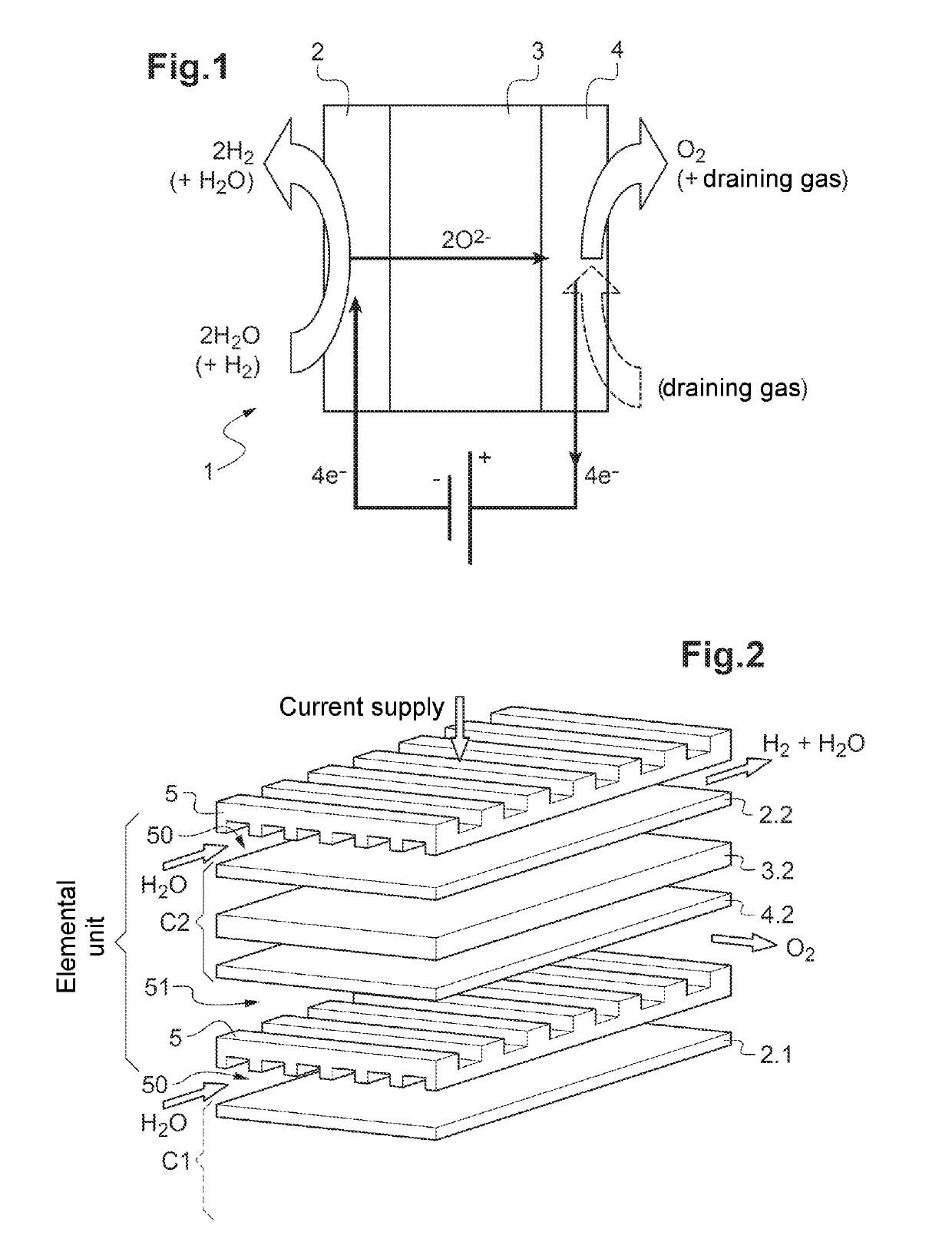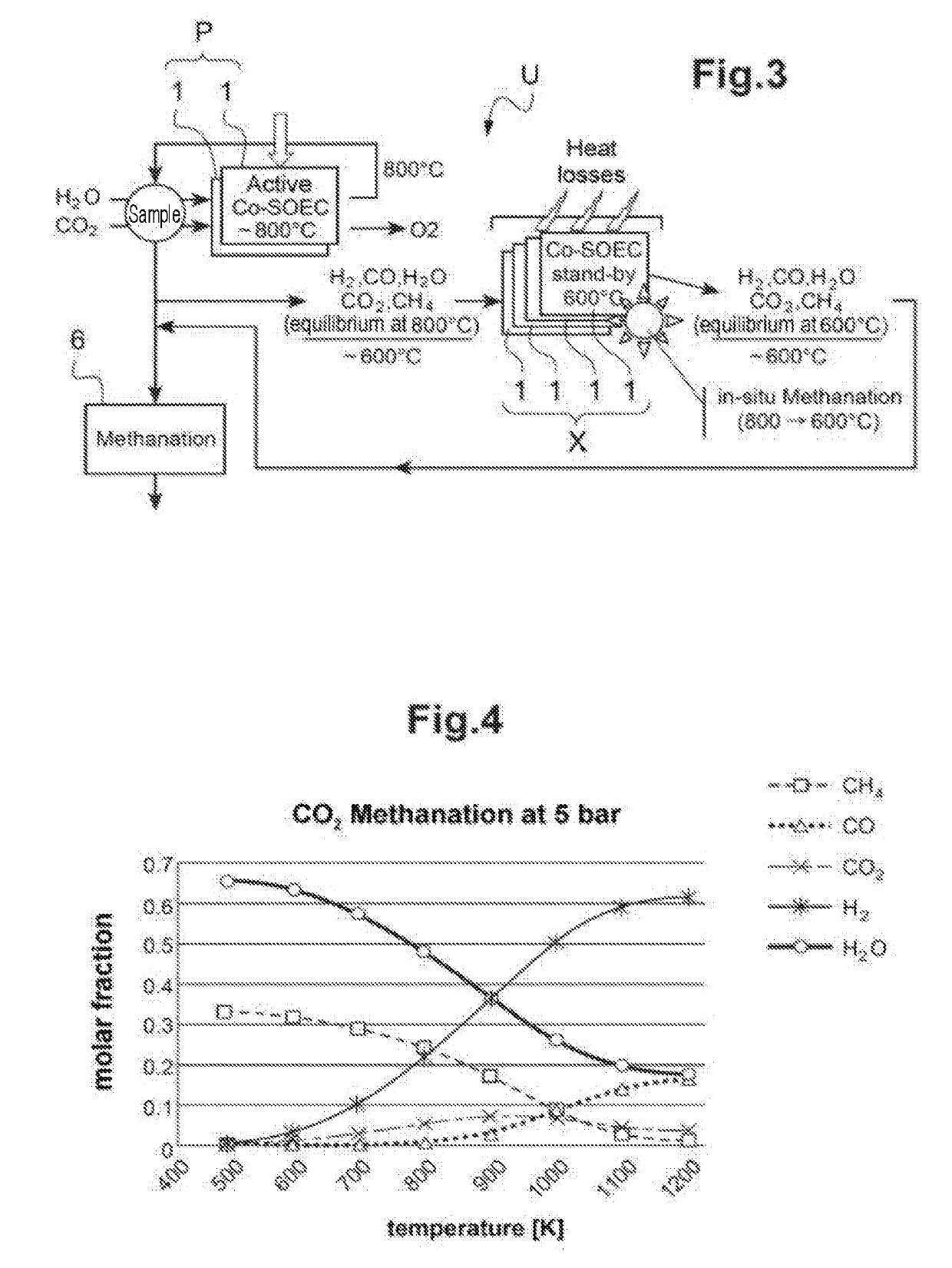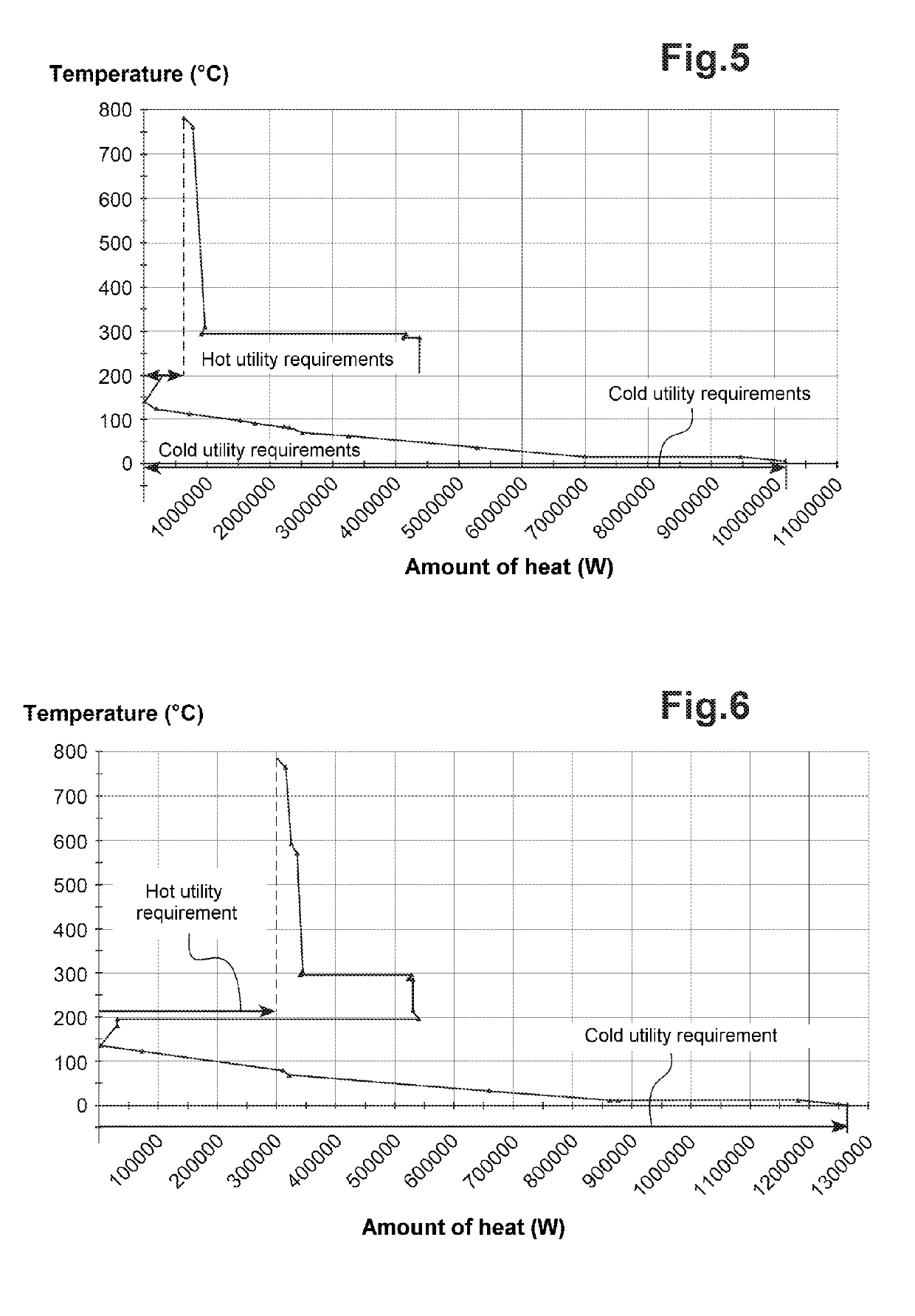Process for starting mode or stand-by mode operation of a power-to-gas unit comprising a plurality of high-temperature electrolysis (SOEC) or co-electrolysis reactors
a technology of power-to-gas unit and co-electrolysis reactor, which is applied in the direction of gaseous fuel, electrolytic organic production, energy input, etc., can solve the problems of limited expansion potential, risk of rapid saturation of remaining capacity of this type of storage, and high cos
- Summary
- Abstract
- Description
- Claims
- Application Information
AI Technical Summary
Benefits of technology
Problems solved by technology
Method used
Image
Examples
Embodiment Construction
[0058]Other advantages and features of the invention will emerge more clearly on reading the detailed description of examples of implementation of the invention given by way of illustration and in non-limiting manner with reference to the following figures among which:
[0059]FIG. 1 is a diagrammatic view showing the operating principle of a high-temperature water electrolyzer,
[0060]FIG. 2 is an exploded diagrammatic view of a part of a high-temperature steam electrolyzer comprising interconnectors,
[0061]FIG. 3 is a diagrammatic view of the operation in stand-by mode according to the invention of a power-to-gas unit;
[0062]FIG. 4 illustrates, in the form of curves, the change in the degree of conversion to methane with the lowering of the temperature within a non-active reactor of the unit, for a typical mixture of H2, CO, CO2 and H2O at the outlet of an active co-electrolysis reactor of the unit;
[0063]FIG. 5 represents the major composite curve, that is to say the variation in the amo...
PUM
| Property | Measurement | Unit |
|---|---|---|
| temperatures | aaaaa | aaaaa |
| temperatures | aaaaa | aaaaa |
| temperature | aaaaa | aaaaa |
Abstract
Description
Claims
Application Information
 Login to View More
Login to View More - R&D
- Intellectual Property
- Life Sciences
- Materials
- Tech Scout
- Unparalleled Data Quality
- Higher Quality Content
- 60% Fewer Hallucinations
Browse by: Latest US Patents, China's latest patents, Technical Efficacy Thesaurus, Application Domain, Technology Topic, Popular Technical Reports.
© 2025 PatSnap. All rights reserved.Legal|Privacy policy|Modern Slavery Act Transparency Statement|Sitemap|About US| Contact US: help@patsnap.com



